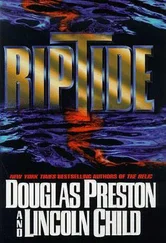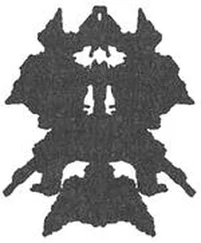There was a murmur of conversation and the questions came thick and fast. Towne leaned over to Perelman. “Not a bad theory, if you ask me.”
“Seems as likely as any.” Perelman had to admit it made sense, but he felt uneasy at how quickly the Coast Guard had settled on it to the exclusion of all other theories. He glanced around for Pendergast, curious whether he was going to make more provocative inquiries, but did not see him in the room.
As the questions trickled off, the commander resumed.
“So what is the next step in the investigation? We’ve asked Homeland Security to provide a detailed analysis of El Duende, covering the time frame when the feet would have entered the ocean, to see if there was any unusual activity. DHS will also comb through SIGINT intercepts from that time frame, and tap ONI and HUMINT sources as well.”
He looked around. “What I’m about to tell you is classified.”
At this the room went completely silent.
“Over the next few days, the Coast Guard is going to send a national security cutter, under my command, to the Mariel coast to perform surveillance operations. We have a Sentinel-class fast-response cutter of the right specifications hailing from the Port Charlotte Station. It has a sophisticated S/SCIF, SEI sensors, increased data-exchange bandwidth, AIS data sharing, and other enhanced capabilities. The flight deck accommodates a DoD HH-60 helicopter, and it is fully integrated with the National Distress and Response System Modernization Program...”
Perelman tuned this out. God, what was it with these military guys and their acronyms? He knew that the Cuban coastline was routinely surveilled by the U.S. fleet, so this wasn’t anything unusual. What did seem a bit unusual was that Baugh himself would command. But then again, he seemed just the kind of guy who would go for the glory. More power to him, if it advanced the case.
The briefing ended and the assemblage began to break up. Perelman rose along with Towne and Morris. “I wonder where Pendergast has gotten to?” he asked.
Towne chuckled. “He’s an odd duck. What the hell is he doing with that garbage he lugged away? God, I’d love to have seen the Flamingo View Motel manager’s face when he carried in those stinking bags.”
“He’s staying at the Flamingo View?” Morris asked. “You’d think the feds would have a bigger budget.”
“Maybe he’s combing through the garbage hoping to find Captain Kidd’s treasure map,” said Towne.
Perelman didn’t respond. He’d thought about it for quite a while after Pendergast and his ward drove away, and ultimately he’d arrived at what felt like a pretty fair guess as to what Pendergast was doing with that garbage. He wondered why Baugh hadn’t thought of doing the same — or why he himself hadn’t, for that matter. An odd duck, for sure — but a damned clever one.
Pamela Gladstone unlocked the door of her lab and held it open for the FBI agent. It was a tiny space, almost entirely filled with electronic equipment — computers, screens, and an NOAA Automated Surface Observing System terminal.
“You can shift those manuals off that chair,” she said, indicating a stool. “On the floor is fine.”
Pendergast slipped them off but did not sit down. Instead, he looked around with his glittering eyes. Lam, wearing his signature red Keds high-top sneakers, came in and wedged himself into the cramped nook that served as his workstation. Gladstone sat down in her own capacious chair, leaning back with her hands clasped in front. She turned to Pendergast. “All right. You wanted to talk? Go ahead.”
“I’ve consulted with a variety of sources, and it’s my understanding you have some unconventional theories about currents and the sea.”
Gladstone had to laugh. “Unconventional? Sounds like you’re describing my political opinions.”
“I loathe politics, presently more than ever. I’m solely interested in your oceanographic views.”
She brushed her long blond hair out of her face. The salt air always made it unruly. “My theories. Okay. Well, they involve chaos. I mean, in the mathematical sense. You’re familiar with the so-called butterfly effect? That the flapping of a butterfly’s wings in Africa results in a hurricane in Florida?”
“I’m familiar with that fanciful idea, yes.”
“Fanciful,” Lam scoffed under his breath. She glared at him.
“It’s overstated, true, but what it really means is that the tiniest change in the initial conditions of a system can snowball into gigantic effects later on. Wallace and I are just applying that mathematical concept to ocean currents. Unfortunately, most of my colleagues think we’re wrong.”
“Are you wrong?”
She hadn’t expected this question. “That depends on how you define wrong . I know we’re on the right track, but we’re getting wrong results. It’s a nontrivial problem. I need time. And more data. Those who think we’re on the wrong track, that’s a different thing. They lack imagination. They’re... well... a little thick.”
Pendergast’s thin lips formed a dry little smile. “Most people, in my experience, are a little thick. If not abundantly so.”
Gladstone had to laugh, along with Wallace. This man, despite his severe look, had a droll sense of humor. She went on. “Ocean currents appear to flow in big, logical movements. The tide comes in and goes out. The Loop Current goes this way and that in a predictable fashion. It’s all there in the charts. The problem is that, when you actually drop small GPS floaters into the ocean, you find you can’t really predict where each individual floater will go. You can start them all together and they spread out enormously. Or you drop them far apart and they all end up on the same beach. So Wallace and I have been trying to develop a fractal mathematical model to explain that.”
“ I developed it, actually,” Lam said. “On my own.”
The man nodded slowly. She wondered how much he actually understood. It was hard to read his marble-like face.
“How does the model work?” he asked.
“Wallace? You’re on — smartass.”
Lam cleared his throat extravagantly. “Ahem. We start by turning the surface of the sea into millions of vectors and perform a fractal matrix analysis showing how each vector evolves over time — given various initial conditions of air and water temperature, wind, tides, waves, currents, solar gain, and other factors. It essentially draws a multidimensional Poincaré map of the ocean’s surface. We do our calculations using the Q machine supercomputer at Florida Atlantic University.” Lam tilted his head. “Am I making sense?”
Agent Pendergast tilted his own head back. “A Poincaré map? Is that all? Why on earth did you not consider a Ramanujan eleven-dimensional Matrix Attractor?”
Lam sat there, dumbfounded. “Um... what?”
“I think our guest is making a joke,” said Gladstone.
“Oh,” Lam said slowly. He was used, she realized, to having a monopoly on irony in the lab.
“No, I don’t have any questions,” said Pendergast, “for the simple reason that I have no idea what you were talking about.”
“But I tried to make it simple,” Lam said with a smirk, regaining his equilibrium.
“No matter.” The agent turned to Gladstone. “How well do your models actually work?”
Gladstone smiled. “So far, I’m sorry to say — total shit.”
The man winced and she saw, to her amusement, that the vulgarity had offended him. “But they will work, I’m sure of it. Let me show you the size of the problem. Wallace, could you please run the floater video?”
“Why not?” Lam came over to a terminal and began tapping. Soon an image of the eastern Gulf of Mexico and the coast of Florida came up.
Читать дальше










![Линкольн Чайлд - Стихи для мертвецов [litres]](/books/396536/linkoln-chajld-stihi-dlya-mertvecov-litres-thumb.webp)

